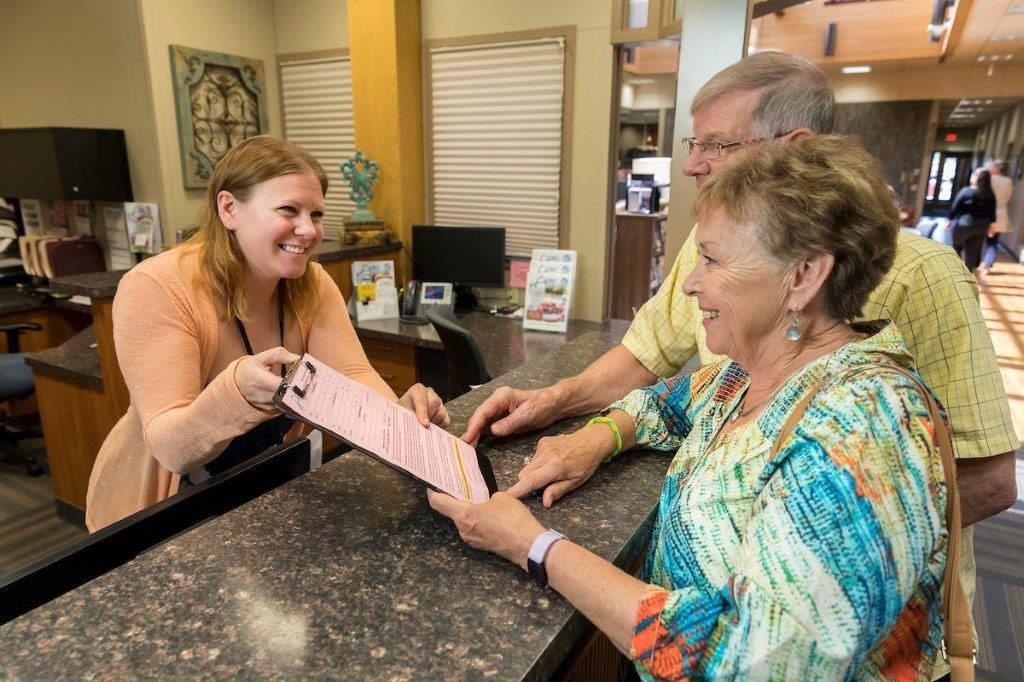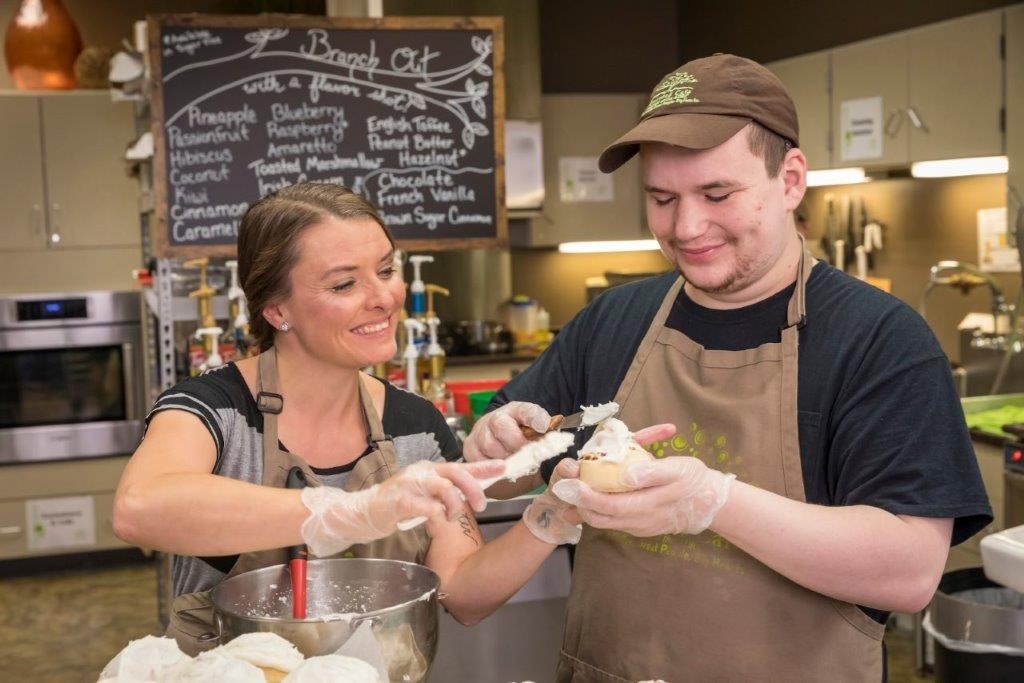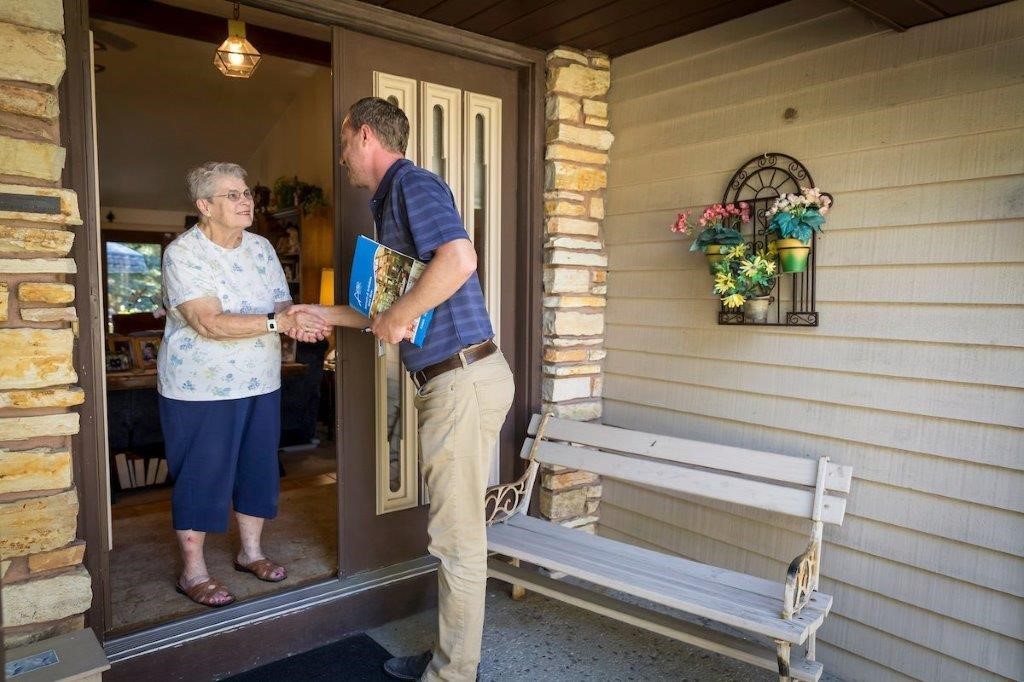By Nan Nelson, Board Member
“Our values are front and center here. Everyone contributes to living those values in their work, and they have to resonate with every position. Are our priorities determined by leadership? I say ‘no.’ Everything worth doing comes from the bottom up, so to speak, driven by the people at our agency who are on the front lines, living and breathing our values. We have a saying here: Every job matters -and we mean it.” So says Devon Christianson, Executive Director of the Brown County Aging and Disability Resource Center (ADRC).

A central focus guiding the work of the ADRC is innovation, Christianson explained. “Every staff member is thinking about innovation,” she said. “We believe that risks are worth taking.” She explained that the diversity of the staff, combining very different gifts and approaches, is the key. “We have people who know themselves and realize that their particular gifts have value here.”
Christianson, who completed Strategic Foresight training with Garry Golden in 2019, points out that another key characteristic of the ADRC is its status as a 501(c)3 nonprofit. “Although most of our funding is from the government,” she explained, “we are not an arm of the government. That allows us to clothe highly bureaucratic functions like Food Share and Adult Protective Services in a completely different and approachable form. We enjoy both stability and freedom to innovate.”

So, what has Christianson been able to achieve through that innovative approach? “We formed dementia-friendly and prevention and caregiver coalitions to try to impact the community in places that agencies don’t normally go,” she said. “For example, we’ve taken them to neighborhoods, businesses, and first responder training.” The Grounded Café itself, she said, was inspired by a mother who opened a coffee house so her two 20-something Downs Syndrome kids could be employed. “Fifty percent of our trainees go on to successful regular employment, and the cafe provides a welcoming meeting place for the community.” Next year a food truck will take the Grounded Café on the road, offering donation-based meals and an accessible workplace.

Strategic Foresight, though, is not just about today’s innovations; it’s about signals that suggest a variety of possible long-term futures. We wondered how Christianson and the ADRC staff watch for trending signals that might lead to a preferred future. The demographic of age is one critical signal they watch. “Everyone knows about the trend toward an aging population,” Devon said, “but, 20 years from now, that will not be true. We will have a stabilized population locally, with even numbers across all age groups. That’s important foresight for an aging-services center.”
Another signal Christianson follows is the growing need for space for small gatherings. And the pandemic has broadened interest in remote work. Now ADRC is piloting new ways for social workers to work successfully from remote locations. “Younger populations will want more remote services,” Devon explained, “and that also takes less office space, something we are short of.”
Christianson explained that important signals and trends, surprisingly, might be both local and low-tech. “We are also reaching out for community input in some new ways. For example, we surveyed a lot of people while they were waiting in line for vaccinations.” She continued, “I get excited about new ideas, and I like to inspire that in others. I loved Strategic Foresight training because it gave me tools to inspire others. Using these tools methodically will help us achieve goals where longer-term, ‘generational’ thinking is important.”
The ADRC management team booked a series of sessions in which they reviewed Garry Golden’s Strategic Foresight training. Then they set up internal signals teams using Google alerts on selected topics: caregiver, remote work, and healthy aging. The team reports signals internally each week, and once a year each of the managers takes time at a board meeting to report headlines, data, implications, what is still unknown, how far away the signal is likely to be, and whether the organization needs to deploy resources there.
“Some people respond to the idea of Strategic Foresight by saying ‘I just can’t think that way– I want to but I can’t…’” Christianson said. “By consistently implementing Strategic Foresight tools, leaders can overcome that barrier. Once people practice using the tools, the process begins to seem natural and becomes a consistent mindset. Practice is the key. Roll up your sleeves – do it, and keep doing it,” she advised.

We asked what might be on the near horizon for the ADRC. “We do a rolling three-year plan. The newest one for 2022-24 can be viewed on our ADRC website. Now that operations are returning to normal,” Christianson said, “we will turn to some big community challenges – or opportunities, as I see them.” For example, the ADRC would like to eliminate duplication of overhead for non-profits by sharing space and administrative functions. Can they do that while also providing a one-stop-shop for clients, she wonders. How can a variety of different resource centers, each small and uncertain and divided by identity, be brought together?
“There are pros and cons to an identity model for service. Instead, I think we must learn to welcome the other, consistently see them as individuals—not their category, not their diagnosis—by hearing their individual stories and responding. If we don’t see each other, we don’t know each other. Then we fear each other and tell false stories. We must do better.”
